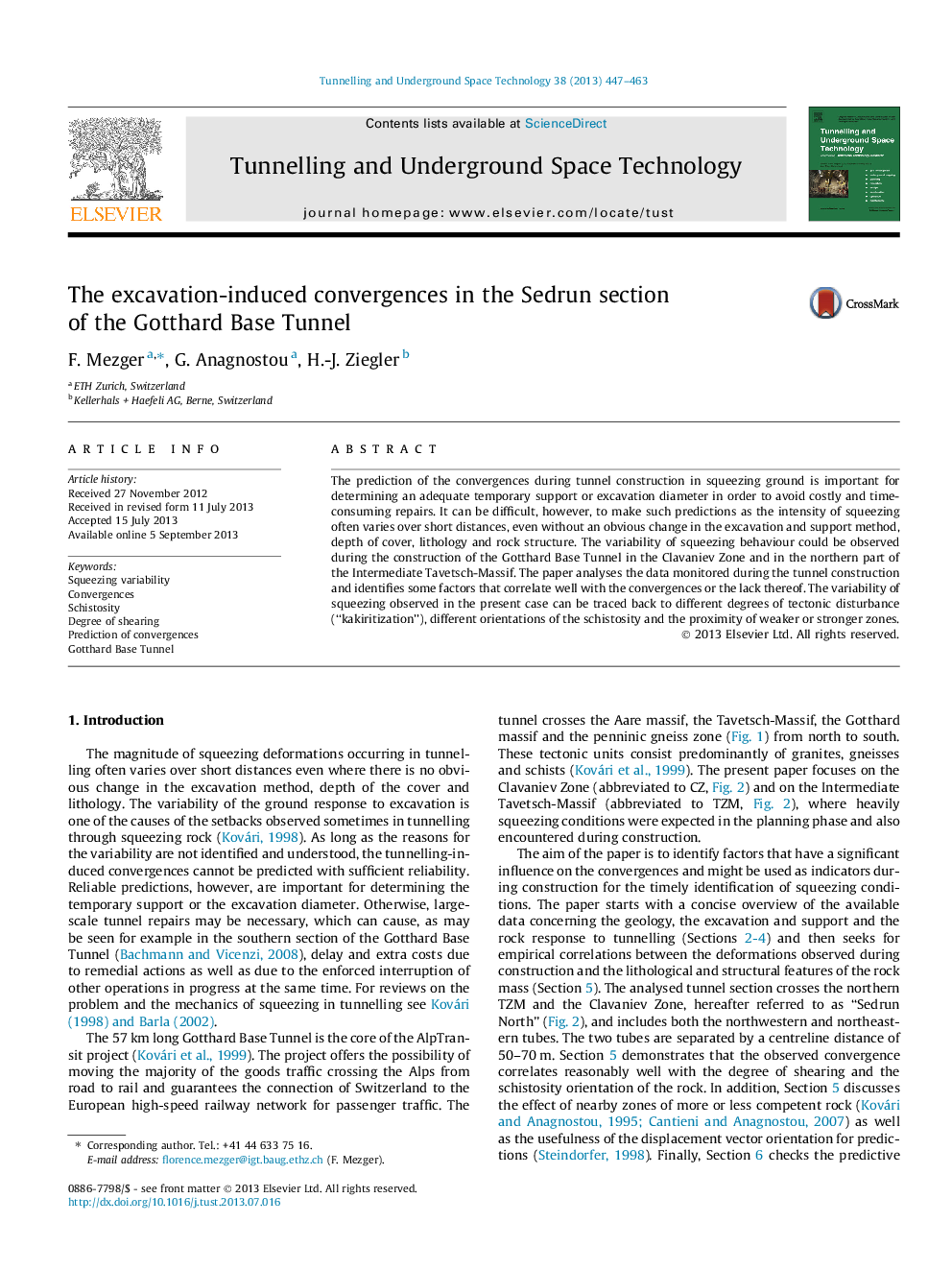| کد مقاله | کد نشریه | سال انتشار | مقاله انگلیسی | نسخه تمام متن |
|---|---|---|---|---|
| 310673 | 533341 | 2013 | 17 صفحه PDF | دانلود رایگان |

• Experiences from one of the most demanding sections of the Gotthard Base Tunnel.
• Detailed information on geology, excavation, support and rock response to tunnelling.
• Identification of schistosity as an important cause of squeezing variability.
• Empirical correlation between deformations and characteristics of the rock.
The prediction of the convergences during tunnel construction in squeezing ground is important for determining an adequate temporary support or excavation diameter in order to avoid costly and time-consuming repairs. It can be difficult, however, to make such predictions as the intensity of squeezing often varies over short distances, even without an obvious change in the excavation and support method, depth of cover, lithology and rock structure. The variability of squeezing behaviour could be observed during the construction of the Gotthard Base Tunnel in the Clavaniev Zone and in the northern part of the Intermediate Tavetsch-Massif. The paper analyses the data monitored during the tunnel construction and identifies some factors that correlate well with the convergences or the lack thereof. The variability of squeezing observed in the present case can be traced back to different degrees of tectonic disturbance (“kakiritization”), different orientations of the schistosity and the proximity of weaker or stronger zones.
Journal: Tunnelling and Underground Space Technology - Volume 38, September 2013, Pages 447–463